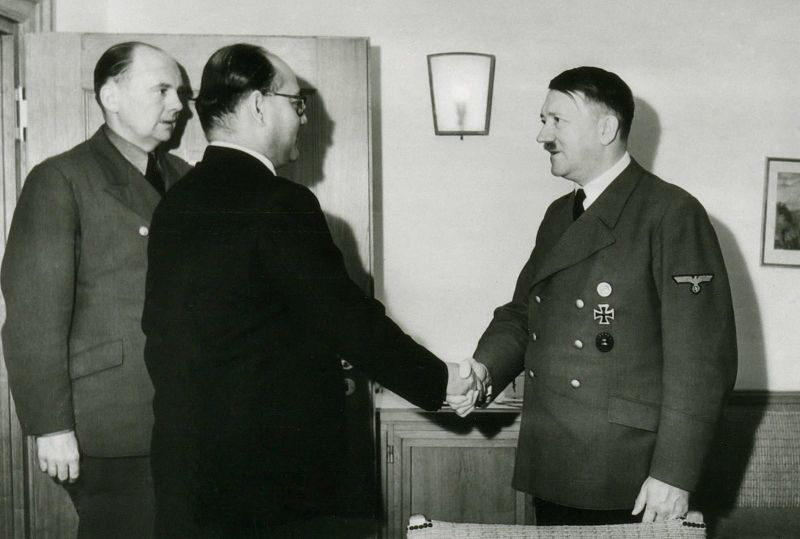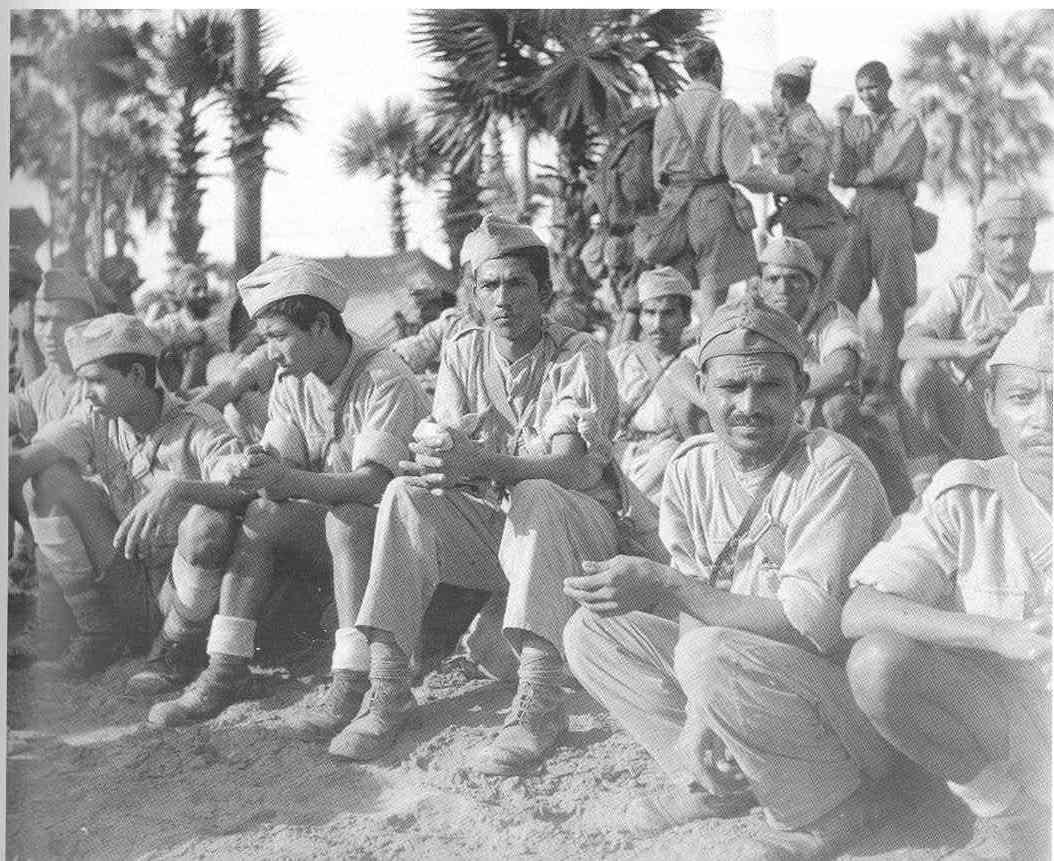Indian National Army
Enlarge text Shrink text- Gaube, K. L.Famous and historic trials, 1946.
- LC manual auth. cd.(hdg.: Indian National Army; came into existence in Sept. 1942; also known as Free India Army; AHF; Indian Army in East Asia; I.N.A.; Azad Hind Fauj; Indian National Army is the Army of the Indian Independence League and all officers and men of the I.N.A. as well as all members of I.I.L. shall owe allegiance to the League)
- Maruyama, S. Indo Kokumingun, 1985:p. 2, 2nd gr. (Indo Kokumingun; INA; Indian National Army)
- Intiya Tēciya Rāṇuvam, INA, 1995:t.p. (Intiya Tēciya Rāṇuvam) prelim. p. 1 (Itērā)
The Indian National Army (INA, sometimes Second INA; Azad Hind Fauj ; lit. 'Free Indian Army') was a Japanese-allied and -supported armed force constituted in Southeast Asia during World War II and led by Indian anti-colonial nationalist Subhas Chandra Bose. It comprised British Indian Army POWs taken by Japan and enlisting civilians in the region. The INA aimed to liberate India from British rule. After winning Japanese assent for its goal, the INA furnished support to the Japanese Army. The Japanese and INA forces invaded India from Rangoon in 1944, and Bose's nominal Provisional Government of Azad Hind declared war on Britain. But losses inflicted by the British in the Battle of Imphal in Manipur caused the invasion to be halted. A long and exhausting withdrawal, accompanied by a lack of supplies, malnutrition, and death, ensued, some victorious soldiers in the Indian Army not taking INA battlefield surrender kindly. The remaining INA was driven down the Malay Peninsula and surrendered to Allied forces in August 1945. An earlier incarnation of the INA, the First Indian National Army, had been founded in 1942 by Iwaichi Fujiwara and Mohan Singh. However, Mohan Singh refused to align with the Japanese, leading to his arrest and the First INA's disbandment. After Subhas Chandra Bose arrived in Southeast Asia from Nazi Germany in May 1943, he refounded the INA with significant recruitment from Indian civilian communities in Malaya and Singapore. Subhas Bose had both drive and charisma—promoting Indian slogans, such as "Jai Hind," which became highly popular—and the INA under Bose was a model of diversity by region, ethnicity, religion, and gender. Bose's impassioned speeches may have been a factor in the POWs and civilians joining the INA. Bitterness at their discriminatory treatment by the British, and a sense of abandonment by the British after the Fall of Singapore may have been factors. Thousands of POWs who did not join were shipped to distant Japanese labour camps and this was another factor. The INA followed Japanese military strategy but had its own military law and police. Although the INA has been described as a collaborationist force, its battlefield performance was poor, and its formation did not constitute a legitimate mutiny. The INA did not oppose Japanese Fascism, nor protest Japanese war crimes that occurred amongst its midst. After the INA's initial formation in 1942, there was concern in the British Indian Army that further Indian troops would defect. This led to a reporting ban and a propaganda campaign called "Jiffs" to preserve the loyalty of the Sepoy. The British Raj, never seriously threatened by the INA, charged 300 INA officers with treason in the INA trials, but eventually backtracked in the face of opposition by the Congress. These trials became a galvanising point in the Indian Independence movement for the Indian National Congress. A number of people associated with the INA during the war later went on to hold important roles in public life in India as well as in other countries in Southeast Asia, most notably Lakshmi Sehgal in India, and John Thivy and Janaki Athinahappan in Malaya.
Read more on Wikipedia >
 Corporate Body
Corporate Body










